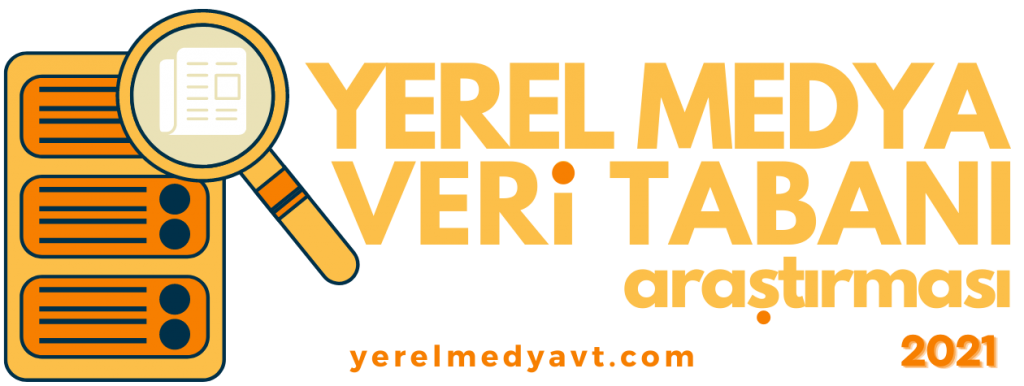LIMITATIONS OF THE RESEARCH

In the Local Media Database Research, a research method consisting of two phases supporting each other was adopted. During the desk-based research constituting the first phase, it was aimed to detect all accessible demographic data, including contact information about local media outlets. In the second stage, a survey was conducted through phone interviews with local media outlets in order to both verify the data obtained from desk-based research and to collect additional data. However, various obstacles encountered in these phases of the research caused both the data and the scope of the research to be limited in certain aspects.. The obstacles encountered during the research and the limitations caused by these obstacles are as follows:
Obstacles Encountered During The Desk-based Research
- In the Local Media Database Research, which is based on the Census method, it was aimed to identify all outlets that constitute a reference for the local media space. However, the limited number of open data sources available on local media outlets and the fact that databases in the media field are mostly focused on national scale print media made it difficult to identify local outlets during the research. In order to overcome this limitation, various suplementary methods (city-based web searches, verification process with local journalists, etc.) were developed during the research. By means of these methods used, 3240 media outlets operating on a local scale were identified. Despite this comprehensive database of local media outlets in Turkey reached at the end of the research, it should be taken into account that there may be local media outlets not covered by the scope of the research. Considering the constantly changing financial conditions of the local media and the active publication/broadcast capacities of the outlets in this direction, it should be taken into account that the data on number of outlets found is only valid for the time period when the research was conducted. In other words, the total number of outlets stated in the research reports may not reflect the current and total number of outlets in the local media.
- One of the obstacles encountered during the desk-based research was that the examined databases examined were limited in terms of covering some types of local media, especially radios, televisions and digital news platforms. In other words, the examined databases included a limited number of outlets and data on local radio, television and digital news platforms. For this reason, suplementary web searches were carried out for each city in order to reach more local radios, televisions and digital news platforms, and this helped to identify more local outlets.
- Another obstacle encountered during the desk-based research was the limited data available on local outlets that did not have a website or whose official website was not active during the web searches. Other data related to these local media outlets (eg, publication/broadcast type, scope and frequency) could not be detected in the database monitorings. On the other hand, the lack of contact information of these outlets in the examined databases prevented these outlets from being included in the field research. These outlets, whose presence and name were determined but whose level of activity and other institituional data could not be accessed, were recorded in the database lists by creating special data codes (eg: no information or data could not be detected) and were excluded from the sample during the analyses.
- Similarly, a limited data could be collected on some of the local media outlets due to the fact that there are limited information provided on their official websites reached during the web monitorings. For example, since some local outlets do not have clear contact information in the "copyright", "about us" or "contact" sections of their official websites, and other communication channels could not be reached during the web monitorings, surveys could not be conducted with such outlets. These outlets, for which detailed data could not be reached, were recorded in the database lists using special data codes (eg, no information or data could not be detected) and were excluded from the sample during the analyses.
Obstacles Encountered During The Field Research
- The field research was carried out by contacting the identifed local media outlets via their phone numbers and conducting a survey by phone. In this respect, it was critical to access up-to-date contact information of local media outlets during the research. However, most of the obstacles encountered during the field research were due to the fact that the detected institutional contacts were not up-to-date or the communication channels were not actively used by the outlet:
- Although 3240 local media outlets were identified during the desk-based research, only 2196 of these outlets could be reached during the field research.
- Among 1044 outlets that could not be reached by phone calls during the field research, no response was received from the calls made to 565 outlets and it was understood that the contact numbers of 479 outlets were not working (due to the broken line or incorrect number information) or that the number reached did not belong to the outlet.
- These obstacles encountered in finding contact information and reaching outlets during the field research caused the research sample to be limited in scope. Out of 3240 local outlets identified, 2196 were reached and the research invitation was conveyed. A survey was conducted with 1222 outlets that accepted this invitation, and 974 outlets chose not to participate in the research.
- Based on the census method, the Local Media Database Research aimed to detect all media outlets that constitute a reference for the local media space and its demographic characteristics.. Despite this, the limited research sample due to the technical problems encountered in the communication process with the local media outlets also causes limitations in terms of representing the entire space of the research data. In this respect, when evaluating the field data of the research, it should be taken into account that these data reflect the conditions of the outlets participating in the research and may not be valid for every outlet in the local media.
- As a result of the surveys conducted during the field research, many demographic data (eg sales figures, number of employees, satisfaction with working conditions, participation in social media platforms, etc.) were obtained. These comprehensive data obtained are of great importance in terms of serving as a reference for the current situation of the local media in Turkey. However, it should be underlined that these data obtained from field research need to be verified through independent sources. However, due to limited research time and resources, a secondary verification mechanism could not be established within the scope of the project. In addition, the absence of any public or other open data source which the obtained field data can be compared, made it impossible to conduct a secondary verification process. In this respect, when evaluating the research data, it should be taken into account that the findings in the report are based on the statements of the surveyed local media outlets and their employees.
FIELD OBSERVATIONS OF THE RESEARCH TEAM

Hasan Berk Akkoç
Field Researcher
The main impression obtained from the survey interviews conducted within the scope of the research is that local media outlets need a communication channel where they can convey the experienced sectoral problems. Because these outlets, although they have conveyed their complaints about the unfavorable conditions they have been in for years to the civil authorities such as local politicians and national policy makers, are still suffering from the lack of progress in their favor. As a result of the interviews, it was concluded that local media problems are common throughout Turkey. Particularly, the compelling Press Advertisement Institution (BIK) procedures, the dilemma of receiving/not receiving advertisements within the duality of being included/not included in the local patronage networks, the fact that the advertising behavior in the provinces has not yet been sufficiently developed, and the lack of subsidies for basic expenses can be counted among the common problems at first hand. In addition, it has been understood that journalism activities are on decline as outlets have difficulty in sustaining themselves economically. It has been understood that not being in the networks of local patronage or producing news against the leading figures of such networks leads to further difficulties for outlets that are already struggling to survive.

Nilsu Eray
Field Researcher

Simay Bozkaya
Field Researcher
